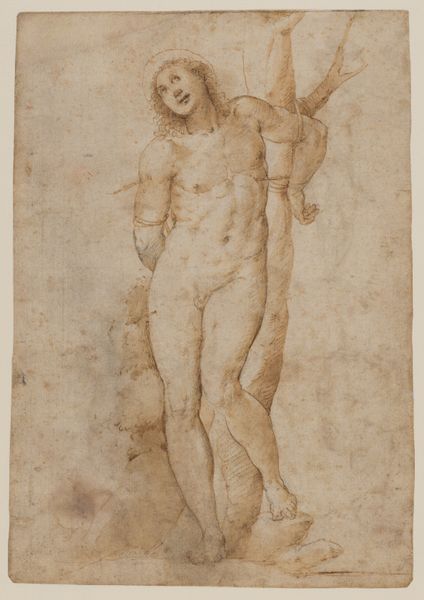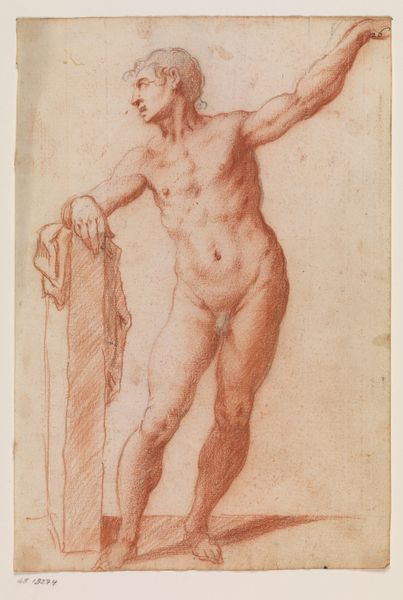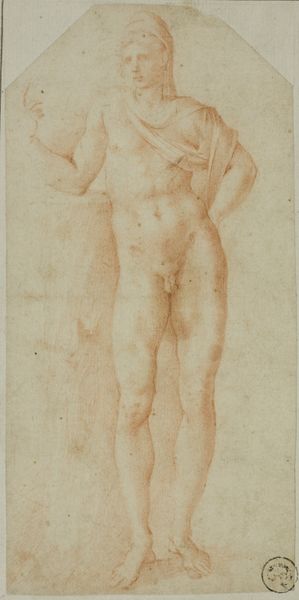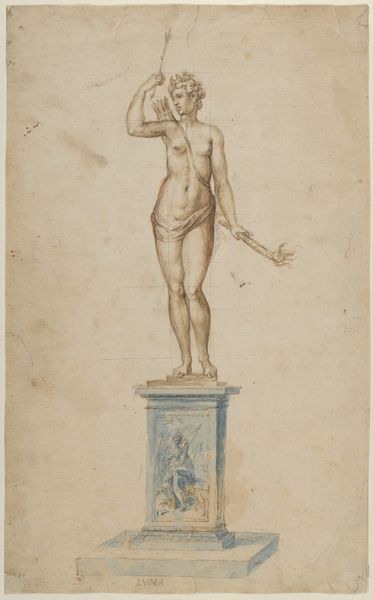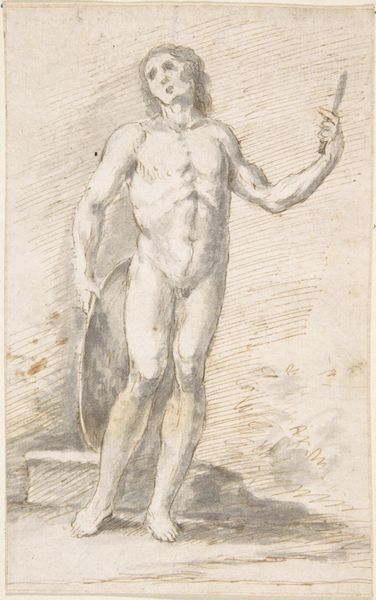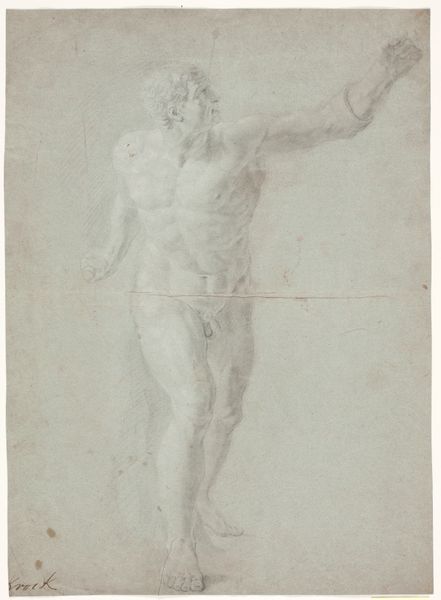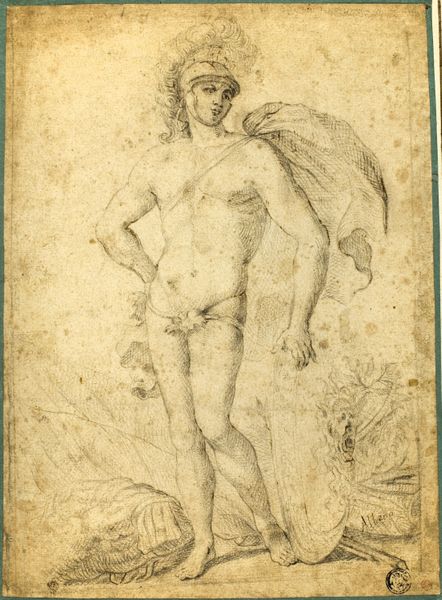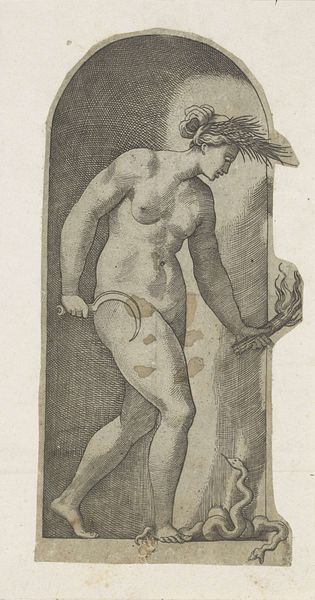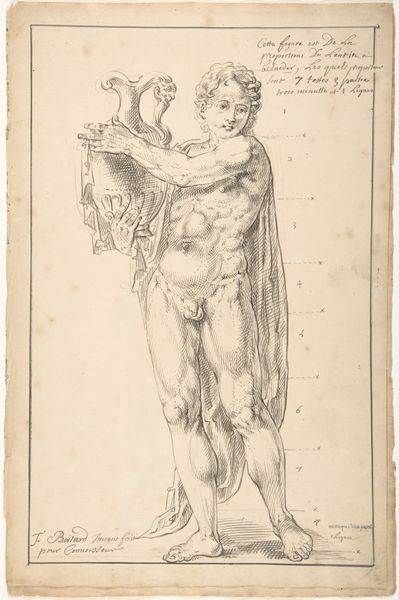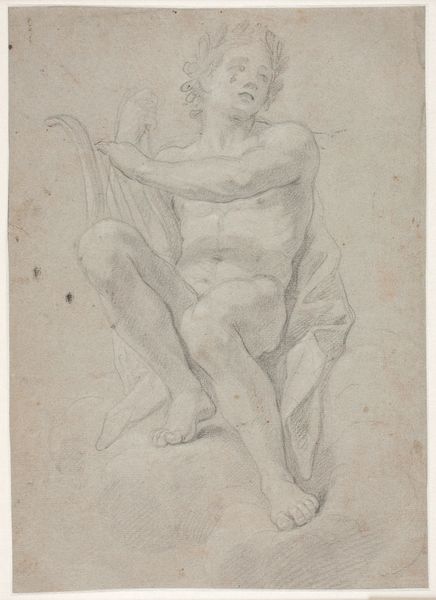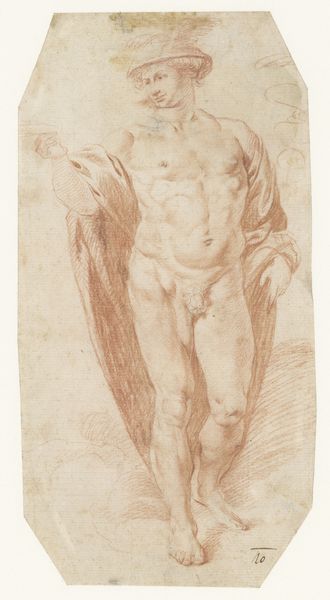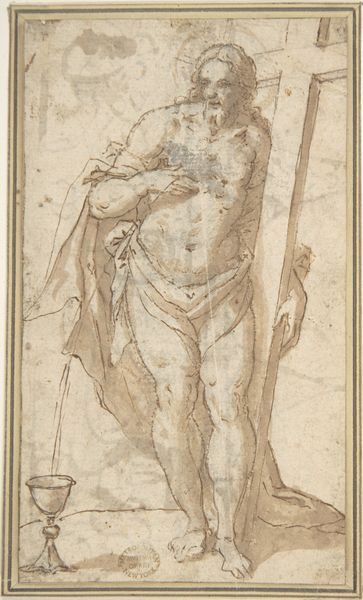
drawing, print, pencil
#
portrait
#
pencil drawn
#
drawing
# print
#
figuration
#
pencil drawing
#
pencil
#
italian-renaissance
#
nude
#
male-nude
Dimensions: 7 x 3 5/8 in. (17.8 x 9.2 cm); maximum; corners have been cut
Copyright: Public Domain
Curator: Standing before us is Marcantonio Raimondi's "Standing Male Nude," created between 1501 and 1511. This print, rendered in pencil, offers a glimpse into Renaissance figuration. What's your first take? Editor: He looks so forlorn. A solitary figure, unfinished, almost hesitant. The light seems to avoid him. I sense an echo of longing. Curator: The process is as fascinating as the figure himself. Raimondi was instrumental in popularizing printmaking, transforming the way art was disseminated. Consider the labor: each line meticulously etched or engraved, allowing for the reproduction and distribution of classical forms beyond the elite. It democratized art in a way previously unimaginable. Editor: Absolutely! But let's also talk about *this* nude. There's an undeniable tenderness. It feels like a stolen moment. I mean, look at the sketchiness of the pencil, a medium known for its accessibility. Did you catch that drape flung across his arm, which contrasts beautifully with the vulnerable pose, offering just a whisper of shelter? It's very compelling. Curator: Precisely. And consider the societal context. The resurgence of classical ideals during the Italian Renaissance meant a renewed interest in the human form, and its material representation. Raimondi, by choosing printmaking, participated in the burgeoning market for such imagery, making classical beauty accessible to a wider audience, effectively contributing to shaping the tastes of the time. The prints would have circulated through workshops and studios. Editor: He embodies not just physical beauty but a certain human fallibility, right? He’s caught between this earthly realm and this pursuit of godly perfection that feels just slightly out of reach... that almost painful ideal that haunted that era! And even the materials speak to that—pencil drawing’s so unassuming, so… earthbound. Curator: I agree, Raimondi presents more than just a study of form, he actively shaped art market dynamics, and participated in broader cultural shifts through reproducible imagery. His workshop setting shaped the means of disseminating such forms. Editor: Exactly! A quiet revolution on paper. What seemed personal has always had public ambition, a testament to how artists, like us, constantly negotiate how our work gets read—how it can travel, influence, and mean something.
Comments
No comments
Be the first to comment and join the conversation on the ultimate creative platform.
